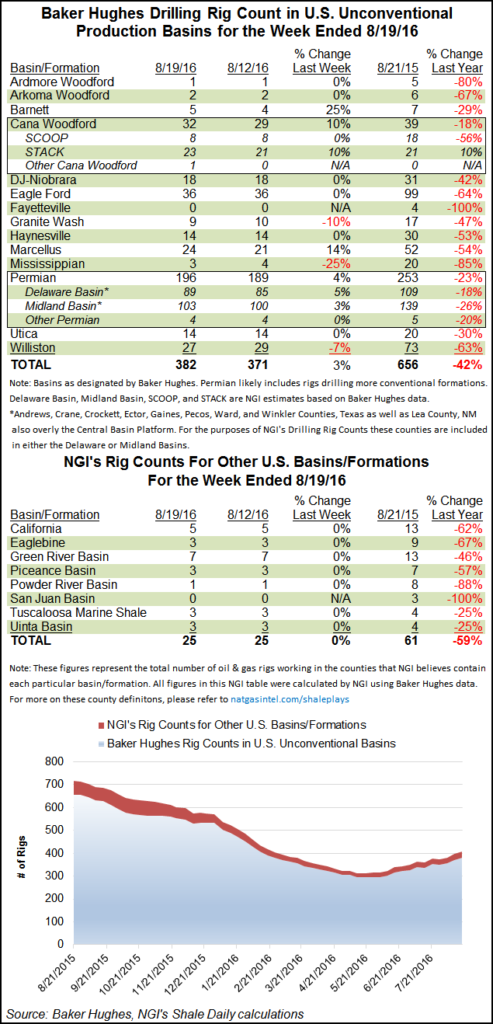Shale Daily | E&P | NGI All News Access | Permian Basin
Texas Has Even Smaller Slice of Shrinking Drilling Pie
It used to be that about half of the operating drilling rigs in the United States were doing their thing in the Lone Star state. Texas only accounts for about 44% of the total now, according to Baker Hughes Inc. And permitting for new drilling in Texas is way down from a year ago.

According to the Railroad Commission of Texas (RRC), 822 original drilling permits were issued in October. That’s only 27% of the year-ago total of 3,046.
And completions are down, too, according to the RRC. In October, there were 1,138 oil, 196 gas and 53 injection well completions compared with 2,035 oil, 354 gas and 63 injection well completions in October 2014. Total Texas well completions year to date are 17,545, down from 25,604 during the same period of 2014.
Turning to the Baker Hughes rig count for Nov. 13, Texas only lost two rigs from the previous week to land at 338 units running.
Overall, the latest rig count saw a decline of four rigs for the United States, nine for Canada and 13 for North America overall.
In the United States, three land rigs were lost while two gave it up in the inland waters and one rig was added in the offshore. Six natural gas rigs departed to be offset by two returning oil-directed rigs. Nine directional rigs were lost, but two horizontals and three verticals came back. The U.S count landed at 767, down from 1,928 one year ago.
In Canada, 11 oil rigs left and two natural gas-directed rigs returned.
The Permian Basin was the biggest mover among U.S. plays, losing three rigs. Across the remainder of plays and the states, changes from last week were no more than two units in either direction.
On a percentage basis, the change from one year ago by play ranges from a decline of 6% in the Cana Woodford to a drop of 84% in the Mississippian. The Tuscaloosa Marine Shale, an emerging play that only had six rigs one year ago, is down 83%. The next highest decliners on a percentage basis are California (down 79%) the Granite Wash (down 78%), the Uinta Basin (down 77%), and the Powder River (down 76%). Substantial double-digit declines prevail in the rest of the plays tracked, too.
© 2024 Natural Gas Intelligence. All rights reserved.
ISSN © 2577-9877 | ISSN © 2158-8023 |
